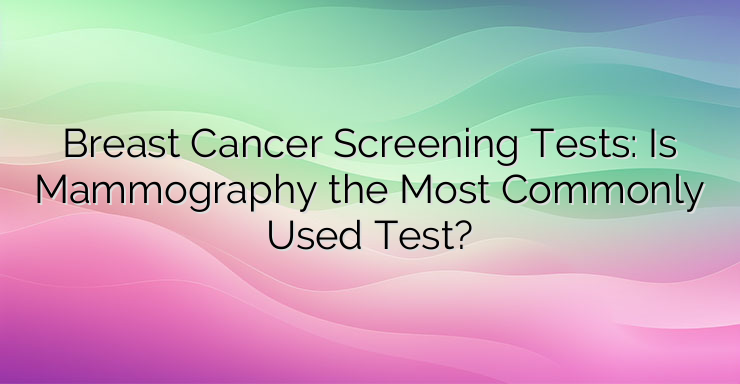Screening tests are used to detect various types of malignancies before clinical symptoms appear. Scientists are studying different types of screening tests to find those with the least harm and the most benefit. Cancer screening studies also aim to show whether early detection (detecting a tumor before it causes symptoms) helps to make the disease more favorable and increase the chances of a cure for patients. With some oncological diseases, the chance of recovery is better if the disease is detected and treated at an early stage. When it comes to breast cancer, mammography is the most common screening test for breast malignancies. Mammography can detect tumors that are too small to feel. This test can also detect ductal carcinoma in situ (DCIS). In it, abnormal cells “line” the breast duct, and in some women it can develop into invasive carcinoma. Mammography is less likely to detect breast tumors in women with dense breast tissue. Because both tumors and dense breast tissue appear white on mammograms. Younger women are more likely to have dense breast tissue. Many factors affect whether a mammogram is able to detect breast cancer: The patient’s age and weight. The size and type of tumor. The localization of the tumor. How sensitive breast tissue is to hormones. Breast tissue density. The period of carrying out the research within the menstrual cycle of the woman. Last but not least – the skill of the radiologist in reading the mammography. Women aged 50 to 69 who regularly have screening mammograms have a lower risk of developing breast cancer than women who do not have screening tests. Magnetic resonance imaging (MRI) can be used as a screening for women who are at high risk of developing breast malignancy. The test does not use X-rays and the woman is not exposed to radiation. The group of high-risk patients includes women who have genetic changes in the BRCA 1 and BRCA 2 genes or a family history of first-line women in the family with cancer (mother, sister, daughter). In addition to having many benefits, screening tests can also cause harm. Harms can include false-positive results. A false-positive test result (one that has shown the presence of malignancy when there actually isn’t) is usually followed by more additional tests (such as a biopsy), which also carry risks. False-positive results are more common in younger women (under 50), women who have had a breast biopsy, or those taking hormonal medications for menopause. Comparing a current mammogram with a past one reduces the risk of a false-positive result.On the other hand, false-negative tests can delay the diagnosis and treatment of an actual disease. Patients with a false-negative result may be delayed in seeking medical attention and treatment, even if they have symptoms. Approximately one in five cancers are missed by mammograms. The risk of a false-negative result increases in younger women, in those who have denser breast tissue, in cases where the tumor does not produce hormones (estrogen or progesterone), or in cases where the tumor is growing rapidly.


Leave a Reply